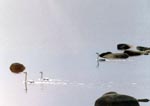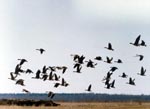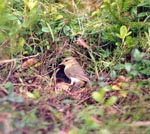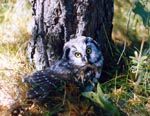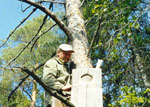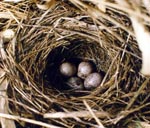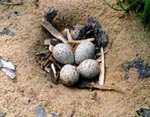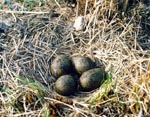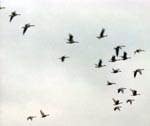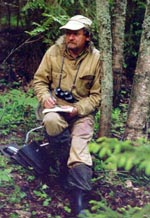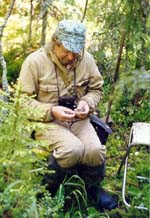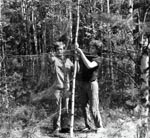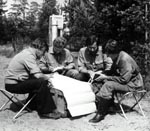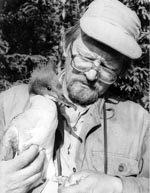285 bird species have been recorded in Republic of Karelia. The Republic is the margin of the range for over 40% of the birds nesting in the area. Human-induced transformation of natural taiga habitats results in notable modifications of the species composition and abundance, as well as in a shift of the distribution boundaries. As forests were cut down the share of southern arrivals in the species composition of birds grew considerably. Representatives of southern latitudes settle mainly in transformed habitats, unlike Siberian taiga species which are also moving into the republic, but prefer forests structurally resembling primary stands. Some species particularly sensitive to the nuisance factor are gradually disappearing from territories exposed to human impact (Anser fabalis, Cygnus cygnus), and their adaptation to new habitat conditions proceeds very slowly. Major changes in agriculture, when cultivation of cereals in Karelian fields ceased, lead to total extinction of common partridge, Perdix perdix, which used to occur in most of the territory and was a common game species for amateur hunters. The background for this situation was however an increase in the total area of farmland.
The republic is crossed by the White Sea-Baltic migration route passed by birds flying in a wide front. Narrow strips of migrants are only formed along the shores of the largest lakes Ladoga and Onego. The area to the east of Lake Ladoga holds the largest spring stopping places of geese in Europe. Up to 1.5-2 mln. geese are recorded in the Olonets district fields every spring. The bulk of the aggregations is formed by Anser albifrons and Anser fabalis. The abundance of Branta leucopsis has also been growing in the area recently. Less common visitors observed in the Olonets stopping places not every year are A. anser, A. erythropus, A. brachyrhynchus, Br. ruficollis, Br. canadensis. Quite large aggregations are formed also by puddle ducks (Anas spp.), Grus grus, waders, diurnal birds of prey, etc. Considerable spring aggregations of diving ducks (Melanitta nigra, M. fusca, Aythia fuligula, A. marila, etc.) are observed by the eastern shore of Lake Ladoga where diving ducks, Anser and Branta geese gather into a powerful stream of migrants along the shore.
The republic is also known to have large pre-migration bird aggregations. Thus, such aggregations in the Onega bay of the White Sea are formed by Branta bernicla, in shallow water areas overgrown with reeds near isl. Lunkalansaari (Ladoga) - by Anas spp.
Little modified typically boreal bird complexes can still be found in old-growth forests along the border with Finland. There is hope that specific areas of such forests with their typical fauna will be preserved for the future by the network of protected areas currently developed here.
 |
russian version | |||||
The site is developed with support from the Baltic Fund for Nature |
||||||
Forests Plant Kingdom Animal World Wetlands Lakes and Rivers Protected Areas Red Data Books Experts |
BIRDS |
|||||
| Last modified: February 6, 2008 | ||||||
